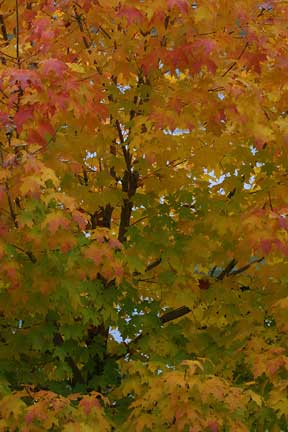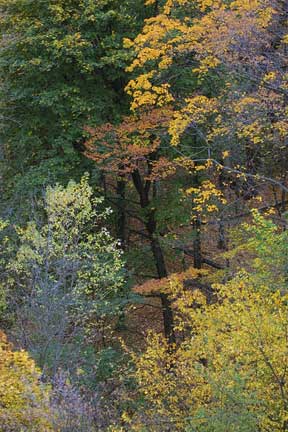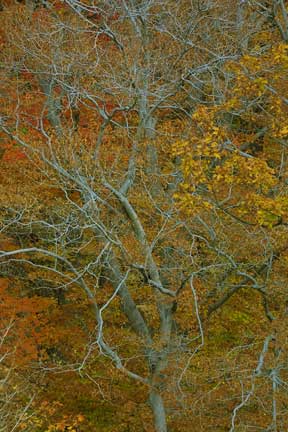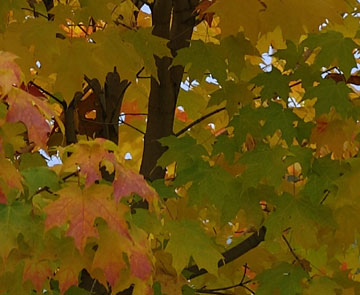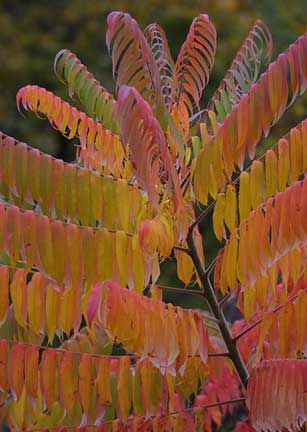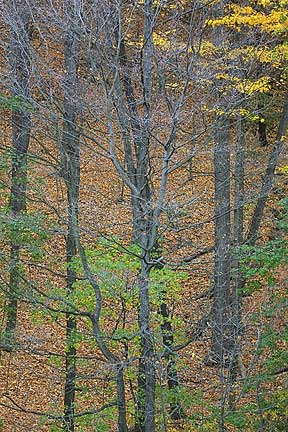![]() This subject is featured inIssue #1of The Luminous Landscape Video Journal.
This subject is featured inIssue #1of The Luminous Landscape Video Journal.
Canon EOS D30
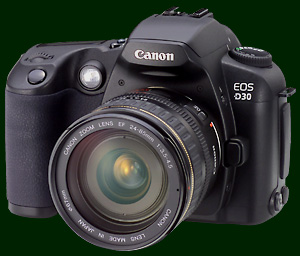
If you are a newcomer to this site you should briefly know that I am a fine-art landscape and nature photographer. In addition to publishing this web site I am a Contributing Editor toPhoto Techniques Magazineand write for other magazines as well. I also conduct field workshops and seminars on landscape photography and digital imaging.
![]()
April 14, 2001
The bulk of material on this and linked pages below was written in November, 2000 when the D30 first came out.
![]() My formal review of the D30 appeared in the March / April 2001 issue of Photo Techniquesmagazine and has now been reprintedhere.
My formal review of the D30 appeared in the March / April 2001 issue of Photo Techniquesmagazine and has now been reprintedhere.
In early December, 2000 I took more than 1,500 frames with the D30 on a week-long shoot in Northern Arizona. This portfolio is titledIndian Countryand shows the camera at work on a real-world shoot.
In February, 2001 I also used the D30 exclusively for a shoot in theRainforestin Costa Rica.
First Looks
Few cameras have been as eagerly awaited at theCanon EOS D-30. Nikon owners have had theD1for about a year and more recently theFuji S1 Proas well.But for the hundreds of thousands of Canon owners the D30 represents the first affordable camera body capable of utilizing the investment that we have made over the years in Canon EOS lenses and accessories.
This review represents a first-look, as I use the camera and become familiar with its features and capabilities. It will be updated frequently in the days ahead. Eventually it will be compiled into a full review for this site and within a month or so a more formalized version will appear in one of the major U.S. magazines.
Now, if you have not already seen it please have a look atPhil Askey’sextremely comprehensive test of the D30 which can be found atDigital Photography Review. This will provide you with all of the nuts-and-bolts technical information that you need. Do come back here though to learn more about this camera from a professional photographer’s perspective.
My camera (approximately serial number 100) is one of the first production cameras to reach consumers hands. Canada (I live in Toronto) appears to have received them slightly before the U.S. and Europe. Since I have received many emails requesting my impressions as soon as they are available I am going to be posting them here over the next few days as quickly as I can. Please check back here frequently as I will be changing both the text and pictures often.
Photographed with Canon D30 at ISO 100. 1/180th sec @ f/4.5 with a Canon 100~400mm IS Zoom @ 160mm. RAW Mode.
The Camera
At first glance one would be hard-pressed to tell that this was a digital camera. It looks and feels much like any current Canon SLR except that it has an LCD screen on the back. No, it is not built to the quality level of theEOS-1V,but then again, what is?. The D30 is heftier than an EOS3 and in fact feels just as substantial.
Is this then a pro level camera? The story goes that Canon has had an agreement withKodaknot to market a pro-level digital SLR until some time in 2001. For this reason Canon has designed and positioned the D30 at a somewhat lower level. Don’t let any of this categorization mislead you though. This camera is a highly capable performer and likely to take all but the most severe abuse.
All of this aside my take is that Canon is doing what italwaysdoes‚ trying out new technology on a consumer-grade camera before bringing it out in a pro model. They’ve always worked this way, most recently with theEOS-3preceding the1Vto market by a year or so. The current rumour is that Canon will be bringing out a 1V level digital SLR with a 6 megapixel imaging chip some time in 2001. Probably a spring introduction followed by a late summer or early fall release. In the meantime lets focus on the D30.
In Use
Eager to try the camera out I popped in the battery and the supplied 16MB CF card and went into my back yard. A few snapshots of the fallen leaves and I was back in my lab loading the card into PhotoShop. I hadn’t even bothered to load Canon’s software yet.
First impressions are very favourable. I had readPhil Askey’scomprehensive technical report and pretty much knew what to expect. I put on the Canon 28~70mm f/2.8L lens and set the camera to theLarge/Finequality level.
From an operational perspective I was very pleased to see that the camera operates in a shooting priority mode. That is, no matter what you’re doing (such as reviewing images on the rear screen or adjusting any of the settings) the instant that you press the shutter release the camera is in shooting mode. No switches to turn or buttons to press. Excellent design.
I was also impressed with how well the rear LCD did in bright sunlight. There will be no problem reviewing images in the field; just shield the viewfinder with your body from direct sunlight. The image zoom button also works very handily and allows you to blow up an image and check to make sure that frames are properly focused and sharp.
In fact, although I had a small advantage by having read about the camera beforehand, even without the manual I found the controls to be simple and intuitive. The ability to not only see the image just shot but also to have a histogram visible at the time of shooting is a real plus in terms of confidence.
Two things became obvious immediately. Firstly, when my film cameras are out of their bags they are always turned on. There no point in fumbling with a power switch when a photographic opportunity presents itself, so I started to use the D30 the same way. One needs to be aware that the D30 isnotinstantly available. It takes over a second from pressing the shutter release until the camera is ready to take a frame. Also, unlike film-based SLRs it takes more than a light touch of the shutter button to turn the camera on. You need to press the release completely to wake the camera up. Not a bad thing, just different from what I’m used to and something to remember.
I was also surprised to see that the D30’s viewfinder shows somewhat less than the full image that is captured; probably about 95%. Since there’s no slide-mount to account for this I am quite surprised.
First Impressions
On-screen the retrieved images were beautiful in terms of colour purity and saturation. They were a bit soft though (as expected), but a modest amount ofUnsharp Mask in PhotoShopquickly fixed that. I played withLevelsandCurvesa bit and it seems to me, looking at the histograms, that there is excellent colour detail available.
Photographed with Canon D30 at ISO 100. 1/90th sec @ f/4.5 with a Canon 100~400mm IS Zoom @ 100mm. RAW Mode.
Now I was ready to do some real photography. I have just returned from a major trip toGreat Smoky National Parkand theBlue Ridge Parkwayin Tennessee and North Carolina, shooting fall colour. I wish that I’d had theD30last week because that would have been a great field test. Alas, I missed the opportunity by a few days.
Though the afternoon was quite overcast the leaves are changing here in Toronto and a short walk after lunch to a local ravine allowed me to do some more serious testing. I took along theD30and theEOS1Vas well, with theCanon 100~400mm ISzoom. My intention was to shoot some side-by-side comparison images. In the1VI was shootingFuji Provia 100F, my standard film, and arguably one of the most fine grained, sharpest transparency films available. TheD30was set toISO 100and I usedRAWmode, the highest quality settings available.
Clickherefor the comparison of the D30 and Provia 100F film.
About Memory Cards
The D30 comes with a 16MB CompactFlash card. Not nearly enough storage for any serious use. I have a new1GB IBM Microdrivefor use with my D30. It seems to me that if you’re going to spend USD $3,000 or so on a D30 then $500 for a 1 Gigabyte drive is not inappropriate. InFine/Largemode this provides 799 images on a card‚ equivalent to some 22 roles of 36 exposure film. InRAWmode (which I intend on using most of the time for maximum quality) one can get 289 frames‚ the equivalent of about 8 rolls. (Clickherefor a comparison of RAW Vs. the JPG modes). Since the battery is good for some 500 frames on a charge, and it’s a rare day that I shoot more than 5 or 6 rolls, these capacities seem quite appropriate for field use, particularly when away from AC and laptop. (I also have a second 340MB card and a spare battery. More on this later.)
This issue of film equivalency was brought home to me shortly after taking some of the frames seen here. I dropped into my film lab to pick up the results from my shoot last week inSmoky. Paying for the processing I realized that the $300 or so that I had spent on film and processing for the 3 day shoot would soon be a thing of the past. Maybe not this year, but once digital becomes my norm the thousands that I’ll save each year on film and processing will quickly make the cost of a Microdrive or two seem like a reasonable expense.
One additional thought about memory cards. Make sure that your camera has one inserted before setting out to take photographs. A film-based 35mm camera shows whether it’s loaded though a window on the back, indicating if film is loaded. The only way to tell if the D30 has a card inserted is to check the top LCD for the number of frames remaining. If it’s blank, better load one. An easy mistake to make since the camera will actually take a shot even if the CF slot is empty!
Photographed with Canon D30 at ISO 100. 1/180th sec @ f/4.5 with a Canon 100~400mm IS Zoom @ 160mm. RAW Mode.
Quality & Image Size Issues
A 1440ppi inkjet printer, such as the Epson 1270 or 2000P, requires a file of at least 240ppi for maximum quality. The D30 can produce a 6" X 9" image at that resolution. Now, my experience over a 30 year period as a photographer is that roughly an 11" X 14" print is about the largest that one can make from 35mm film, either in the traditional or the digital darkroom. So I was eager to see, using the best technology available, if I could make a print that large, and what it would look like.
UsingGenuine Fractals ProI ressed-up the above image to 11" X 16.5" @ 240 DPI, and made a print on theEpson 1270, on Super A3/B sizedPictorico Hi-Gloss Film. The section on the right is a crop of that blow-up at "actual pixels" resolution. This file became 30MB to be able to be printed at that size.
I wish I could show you the actual print. It’s quite remarkable because it’s hard to believe that a 3.3 megapixel camera can produce such a detailed image. Maybe it’s the smoothness of the tonalities, or maybe it’s the complete lack of grain, but I’m very favourably impressed. Prints of this size are simply not a problem!
Photographed with Canon D30 at ISO 100. 1/125th sec @ f/4.5 with a Canon 100~400mm IS Zoom @ 200mm. RAW Mode.
Workflow
The following is the workflow that works best for me at the moment.
Since I currently have more than100 Gigabytesof scanned files I am very sensitive tothis issue. I use a PC card reader attached to a USB port and insert theMicrodrive(or any CF card for that matter). Thumbnails are immediately visible. Using Canon’sZoombrowser EXI transfer all of the RAW mode files from the card to the PC. This takes about 6 seconds per image. At this point the card can be removed and reformatted for further use.
I then select the file that I want to work on and chooseFile / Convert Raw Image. (A hint:If you useFile / Convert Raw Image With User Defined Parametersyou’ll be able to view a somewhat enlarged thumbnail in this dialog box. Since the Zoombrowser thumbnails are quite small, this can be very handy when judging image quality).
This then creates a TIFF file and on my 600Mz Pentium III takes about 32 seconds. I then right click on that image thus created and chooseEdit Image Using PhotoShop. This loads the file, ready for processing in PhotoShop.
Of course this is also a good time to review the thumbnails and delete any files that aren’t of interest. Even with compressed RAW files at only 3MB apiece this can add up to serious storage requirements quickly.
Photographed with Canon D30 at ISO 100 with a Canon 100~400mm IS Zoom @ 250mm. RAW Mode.
What You Work With
I must say that I was astounded when I loaded the first few RAW-based TIFFs into PhotoShop. These files have noWhite BalanceorSharpeningapplied and represent the naked data obtained form the imaging chip. Consequently I’d expected a file which would require a great deal of work.
Just the opposite is true. With the exception of a need for the application ofUnsharp Maskingthese imported files are remarkable. Colour balance can be an issue since noWhite Balanceis applied toRAWmode files. In the case of these photographs shown here, mostly shot on a quite cloudy afternoon, about 5-10cc worth of adjustment of theBlue ChannelinLevelswas all that was needed to suck out the blue cast. No different than what I would have done with a film-based scan.
I was particularly taken with the purity of the colours. In a 13X19" print of the above shot the greens and yellows can be seen just as I remember them. No saturation increase was needed (something that likely would have been with Provia‚ a somewhat desaturated film).
What I was very pleased about was that there was, of course, no need to do any "spotting" with the cloning tool. The files are completely free from the usual dust spots and micro-scratches that scanned film is ere to.
RAW Vs. JPG ‚ Large/Fine JPG mode isalmostas good as RAW. Quite a surprise, but RAW is still the way to go.
D30 Vs. Film ‚ The results of this comparison are remarkable.
ISO Comparison ‚ ISO 400 looks almost as good as ISO 100.
Managing Megabytes ‚ a look an file management and a review ofZoombrowser.
BG-ED3 ‚ A commentary and recommendation on theD30’saccessory vertical grip.
Custom Function 12 ‚ Setting ISO speed on the fly.
Flash & Skin Tones ‚ Testing the built-in flash with indoor portraits.
Digital is Not Polaroid ‚ Some discussion on why proper image processing is an integral part of using a digital camera.
Photographing an Aurora ‚ On my 6th day with the D30 I was fortunate enough to photograph an auroral display.
Gripes & Grumbles ‚ The things that Idon’tlike about the D30.
A D30 Portfolio ‚ Selected photographs taken with the D30
The Digital Wallet ‚ A flawed but useful product for D30 owners
A D30 Zoo Day ‚ A rainy day with the D30 and a 300mm f/2.8L IS at the zoo
Sigma 14mm ‚ A review of av e r ywide lens that mates well with the D30
Video review ‚ Using theBelkin USB VideoBusfor on-location video review
ST-E2 ‚ Fixing the D30’s autofocus problems with a remote infra-red trigger.
D30 Vs. Provia 400F ‚ Which has less grain? Guess!
ISO1600 ‚ A wildlife situation where ISO 1600 gets tested for the first time
CRW Bridge ‚ A shareware program that allows instant on-screen viewing of full frame RAW files
BreezeBrowser ‚ A review of the best program yet for reviewing and converting D30 RAW files.
isoR ‚ A review of two Photoshop Actions that reduce noise in high ISO images taken with the D30
Uwe Steinmueller atDigital Outback Photois a long-timeNikon D1owner. He now has aCanon D30and has started his on-going review. "I am really amazed about the detail shown in these photos. For me they are somehow more three dimensional than my D1 photos. Very film like and just wonderful."
Nov 10, 2000
Neil Turner, a contributing editor toDPReview.comand a photojournalist has aSecond Opinionreview of the D30 which many will be interested in reading.
Steve atSteve’s DigiCamshas published his review of theD30.
His admiration for it is comparable to mine‚ for much the same reasons.
Rob Galbraith atrobgalbraith.comhas now published his hands-on review of the D30
from the perspective of a photojournalist. He has great admiration for the camera’s image quality,
though some reservations about autofocus and shooting speed.
Imaging Resourcesin their review of the D30 has said, "Overall, the D30 delivered exceptionally high quality images, with excellent detail, excellent color, excellent tonal range, and very good noise performance. Look out world, Canon’s on a roll, and the digital photography landscape is changing yet again… For the better! Highly recommended!"
February 3, 2001
A comparisonof theD30used at ISO 400 compared to the newFuji Provia 400Ffilm is now online.
Also, the well respected wildlife and nature photographerGeorge Lepphas just published a report in theMarch 2001issue ofOutdoor Photographermagazine titled "The Great White Bear Meets the Canon EOS D30". He describes using hisD30to shoot Polar Bears up in Churchill, Manitoba. Anyone owning, or considering owning a D30 will enjoy reading it. His experience of shooting in arctic conditions with the D30 match my own‚ no problems.
April 14, 2001
My formal review of the D30 appeared in the March / April issue of Photo Techniques magazine and has just been reprintedhere.
April 30, 2001
ReaderMatthew Feltonhas published anonline comparisonbetween theCanon EOS D30and theKodak DCS 560. It makes for fascinating reading.
July 31, 2001
My colleagueIan LyonsofComputer Darkroomcontinue to be fascinated with getting the utmost quality from theCanon EOS D30. His articleThe Importance of White Balanceis now available on his site.
![]() This subject is now featured inVolume 1, Number 1of The Luminous Landscape Video Journal.
This subject is now featured inVolume 1, Number 1of The Luminous Landscape Video Journal.
